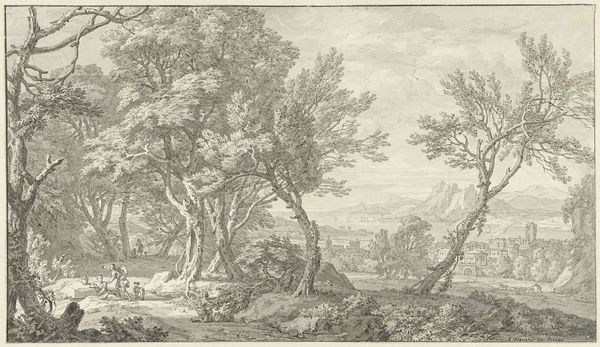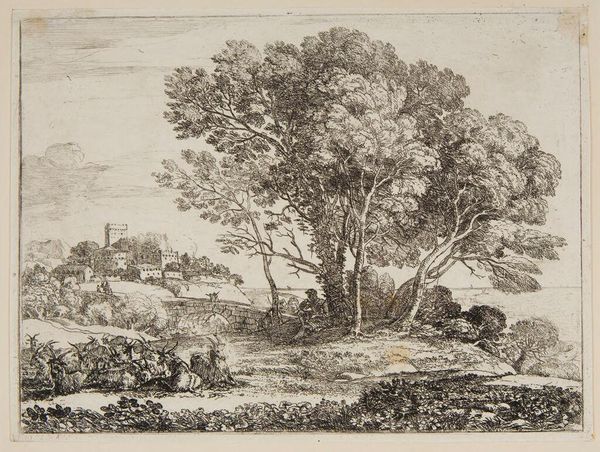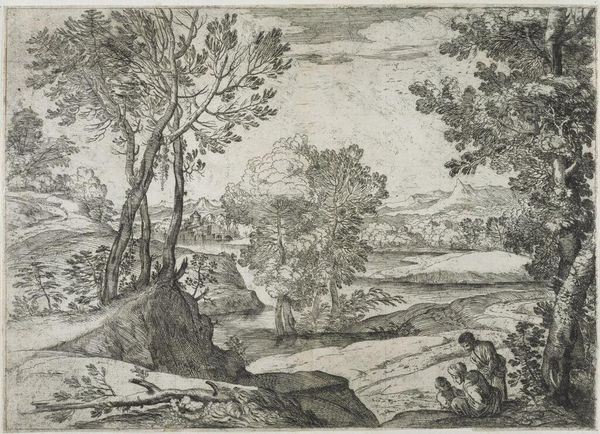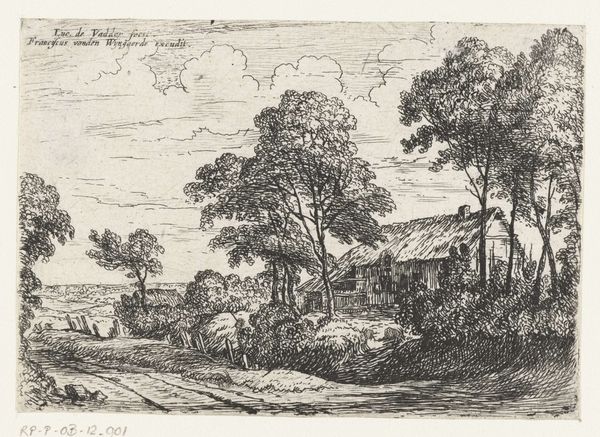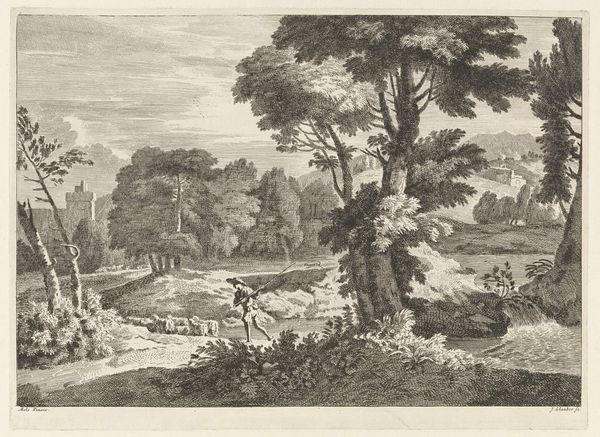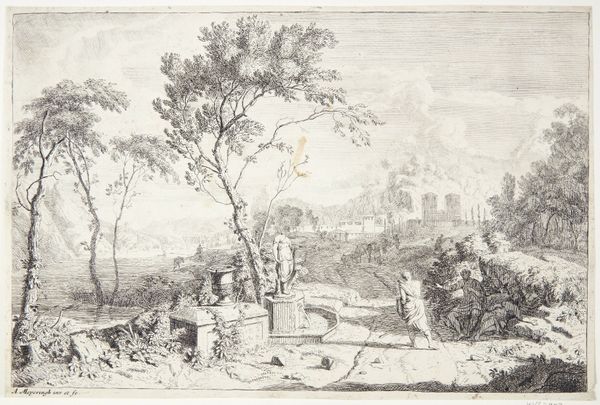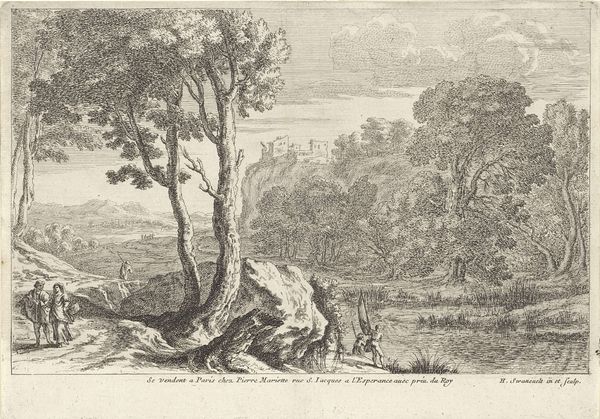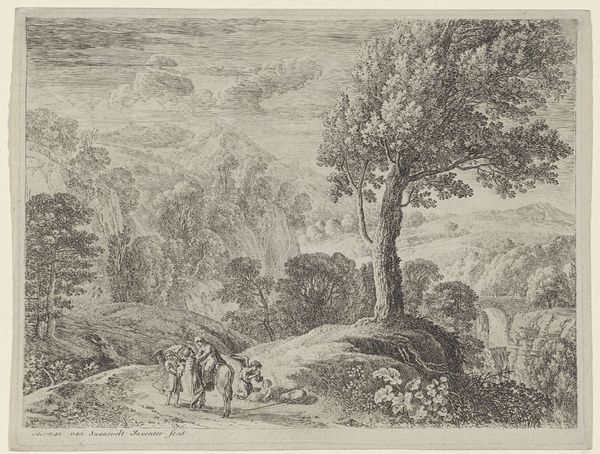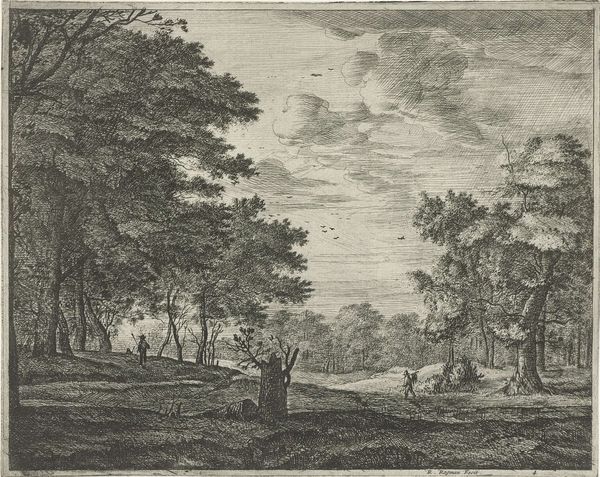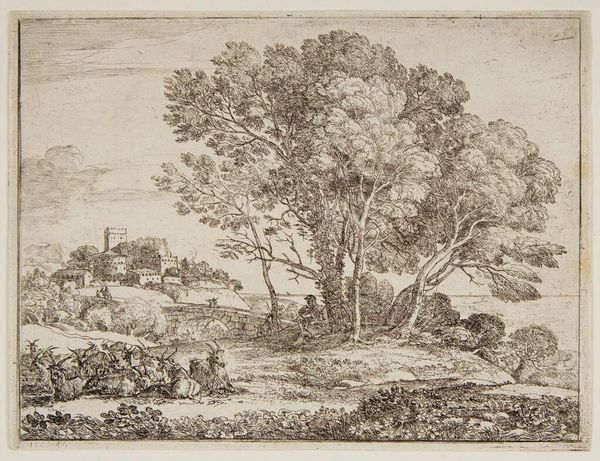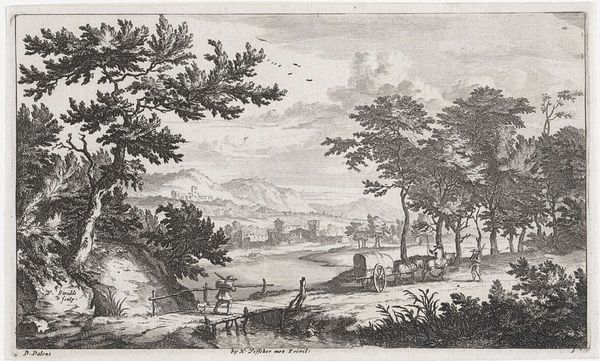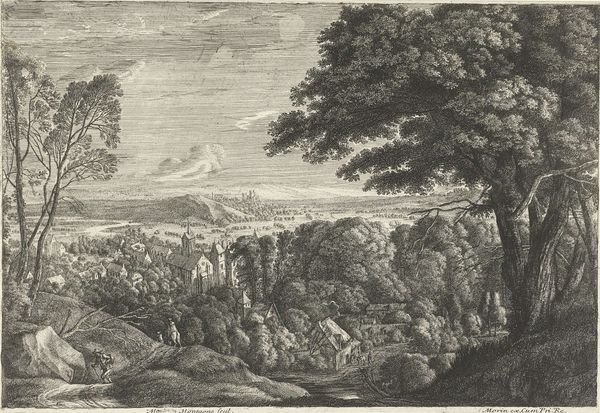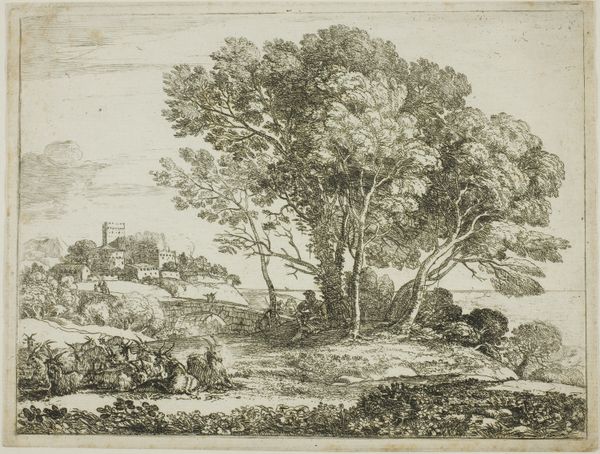
drawing, ink, pen
#
drawing
#
baroque
#
landscape
#
ink
#
pen
Dimensions: height 190 mm, width 332 mm
Copyright: Rijks Museum: Open Domain
Editor: This is Isaac de Moucheron's "Arcadian Landscape," created sometime between 1677 and 1744. It's an ink and pen drawing held at the Rijksmuseum. I'm struck by the detailed rendering of nature, yet there's an artificiality, almost like a stage set. How do you interpret this work? Curator: The term “Arcadian” itself is key here. It refers to an idealized vision of pastoral life, harking back to ancient Greece, but heavily filtered through the lens of later social and political agendas. Think about how landscapes during this period served as allegories for power, order, and control. What seems natural is, in fact, a carefully constructed ideology. Does that initial "artificiality" you noticed hint at something deeper to you now? Editor: Definitely! So the landscape isn't just a pretty scene; it's a statement about societal values at the time? Like who has access to nature, perhaps? Curator: Exactly! Consider the figures placed within the landscape. Who are they, what are they doing, and more importantly, who *aren't* they? Are there markers of class, of leisure? The very act of depicting this “ideal” masks underlying power structures, making it exclusive and inaccessible to many. It makes you wonder, whose Arcadia is this really for? Editor: That’s fascinating. I hadn’t thought about it that way, but it completely changes how I see the drawing. Now, I notice what's missing, all the unseen labor that must go into creating and maintaining this perfect world. Curator: Precisely. Art allows us to analyze, criticize, and ultimately, understand the forces that shape our perceptions of reality. Editor: I never thought about landscape art in that context. It’s so much more complex than just a pretty view! Curator: Indeed, engaging with art through a critical lens helps reveal the deeper, often hidden, narratives woven within its creation and reception.
Comments
No comments
Be the first to comment and join the conversation on the ultimate creative platform.
